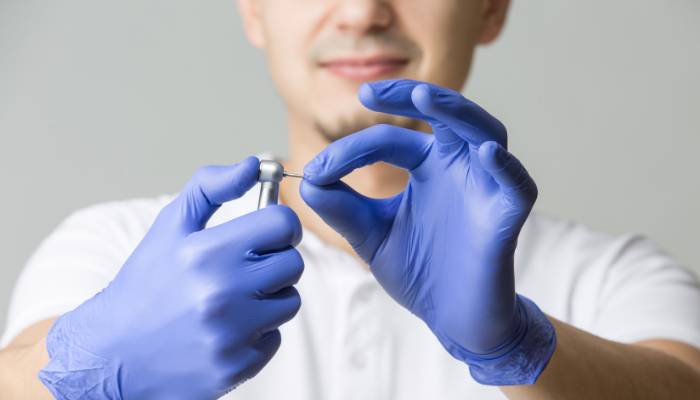Dental handpieces are expensive pieces of kit in a dentist armor that deserve regular cleaning and maintenance. It’s not just to ensure a lengthy lifespan for your equipment, but also to guarantee safe and effective performance for your patients.
With the proper routine, you can expect dental handpieces to last a number of years. In addition, you will avoid expensive repair and part replacements, saving your practice hundreds or perhaps thousands of dollars throughout the lifecycle of your products.

Pick the Right Equipment
Even before thinking about cleaning and maintenance routines, it’s important you buy the correct products in the first place. Even the most meticulous routine will not be able to combat substandard products.
Choosing dental equipment isn’t about going for the most expensive product, although budgeting for adequate handpieces is important. You get what you pay for, after all.
Do your research, read reviews, consult experts, and always make sure that you have an appropriate product guarantee. When it comes to this type of equipment, the reputation of your chosen manufacturer is paramount.
Read Manufacturer Instructions
Every handpiece is different. We’re going to run you through some generic advice that applies to all equipment, but you should also check for instructions that are specifically geared towards your model.
Further, ensuring you adhere to manufacturer instructions at all times is also important when it comes to the warranty. If you do something that they explicitly tell you to avoid, most if not all claims will be unsuccessful.
Basic Cleaning Steps
You want to make sure you build a simple yet consistent cleaning and maintenance process. It will take just a few minutes each time, but it is essential that you do this after every patient visit.
Note: these steps will ask you to use a cleaning product. You do not want to use a detergent that is a disinfectant. Instead, use a mild product that features germicidal properties.
External and Interior Cleaning
You want to first remove all obvious bio-matter using a soft, clean brush. Use a mild detergent if necessary, and use running water should it be necessary. Operate the handpiece for 30 to 60 seconds to remove any remaining grit or other matter. Important: do not submerge your product in water. Avoid ultrasonic cleaners at this stage.
Next, you want to use a little bit of lubricant in the smaller hole in the handpiece (also known as the ‘drive line’). Using about 10-15 drops of lubricant, run the handpiece for approximately 20-30 seconds. This will remove any remaining debris.
Then, lubricate your dental handpiece before starting the sterilization process. In particular, focus on the heads, the contra angles, and the nosecones. Also apply lubrication to the spindle at least once per day. Do not worry about using too much lubricant; it will not damage your dental handpiece.
Sterilization Process
First, remove the bur from the dental handpiece (very important!). Following the manufacturer guidelines, sterilize your equipment. Avoid using the dry heat method, and instead follow the autoclave or chemiclave processes.
Once the process is done, remove the handpiece straight away. Do not try to speed up the cooling and drying process; let nature run its course! Using running cold water, for instance, can damage your equipment.
Storage
We see a lot of dental practices store their handpieces inappropriately, often standing upright in random uncovered locations in the theater. This is dangerous, as external debris can easily collect in a short space of time.
Instead, you must purchase a storage unit that has been specifically designed for dental handpieces. It is very important that these are fully covered from external contaminants, ensuring your patients are treated using clean and safe equipment.
Work with a Trusted Repair Company
It will sometimes be unavoidable that a visit to a repair company is necessary, even with regular cleaning and maintenance steps. When this occurs, it is preferable to have an existing relationship with a vetted repair company. The last thing you want to do is scramble to find a supplier.
Reputable companies will help you minimize the required visits, rather than try to string you along to maximize profits. Do your research before engaging a maintenance company, read reviews, ask colleagues, do your due diligence.

Lifebing is driven by an unrelenting passion for promoting health and well-being, our team is wholly committed to curating exceptional content and immersive experiences.
